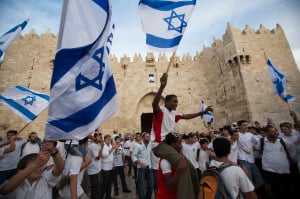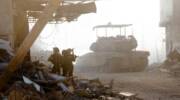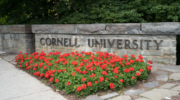“As a resident of Jerusalem, I am extremely excited to read this inscription, written 2,000 years ago, especially when I think that this inscription will be accessible to every child that can read and uses the same script used two millennia ago.”
By: Aryeh Savir, World Israel News
Archaeologists uncovered a unique stone inscription dating back to the Second Temple Period with ‘Jerusalem’ written in full in modern Hebrew script – the first such discovery ever.
The exciting find was presented on Tuesday during a press conference by the Israel Antiquities Authority (IAA) and the Israel Museum.
Archaeologists discovered the inscription this past winter near the Jerusalem International Convention Center during a dig carried out in the area prior to the construction of a new road, where the foundations of a Roman structure were exposed. The most significant part was a stone column drum, reused in the Roman structure, upon which the Aramaic inscription appears, written in Hebrew letters typical of the Second Temple Period.
The inscription reads “Hananiah son of / Dodalos / of Jerusalem” in three lines.
‘Spelling as we Know it Today’
Dr. Yuval Baruch, the IAA’s Jerusalem regional archaeologist, and Prof. Ronny Reich of Haifa University, who read and studied the inscription, noted that “First and Second Temple period inscriptions mentioning Jerusalem are quite rare. But even more unique is the complete spelling of the name as we know it today, which usually appears in the shorthand version.”
This is the only stone inscription of the Second Temple era known in which the full spelling of Jerusalem’s name appears. It has been seen in one other instance, on a coin of the Great Revolt against the Romans (66-70 CE).
This unusual spelling is also seen in the Bible, where Jerusalem appears 660 times, with only five mentions at a relatively late date using the full spelling.
David Mevorach, chief curator of archaeology at the Israel Museum, said that the context of the inscription does not help to determine where it was originally displayed or who Hananiah son of Dodalos was, although it is assumed he was an artist-potter, the son of an artist-potter, who adopted a name from the Greek mythological realm.
“It is interesting that he decided to add his origin from nearby Jerusalem to his family name,” Mevorach added.
The area of the Jerusalem International Convention Center has been excavated for many years, exposing a potter’s quarter, which produced vessels for Jerusalem for a period of over 300 years spanning the Hasmonean Period through to the Late Roman era.
Danit Levy of the IAA, who is currently leading the dig in the area, said that this is the largest ancient pottery production site in the Jerusalem region.
In the latter part of the Second Temple period, particularly during Herod’s reign, production was focused on manufacturing cooking vessels. The production installations were found spread across the site, organized into manufacturing units that included kilns, pools for preparing clay, plastered water cisterns, ritual baths, and workspaces for drying and storing the vessels.
Ancient Pottery-Producing Village
A small village developed alongside the area where the pottery was produced, whose economy was based on pottery production. The pots were sold in large quantities to the population in Jerusalem and its environs, especially the pilgrims arriving in the city.
Following the destruction of Jerusalem in 70 CE, the potter’s workshop resumed its activities on a small scale until the early 2nd century CE, when the Roman 10th Legion established its workshop on the site for the mass production of ceramic building materials – roof tiles, bricks and pipes, as well as tableware, cooking ware and storage vessels, typical of the Roman army.
“As a resident of Jerusalem, I am extremely excited to read this inscription, written 2,000 years ago, especially when I think that this inscription will be accessible to every child that can read and uses the same script used two millennia ago,” Prof. Ido Bruno, director of the Israel Museum, enthused.
Sign the Declaration to Keep Jerusalem United
Jerusalem Must Remain the United Capital of Israel
I declare that Jerusalem is the eternal capital of the Jewish People and support all efforts to maintain and strengthen a united Jerusalem as the undivided capital of the State of Israel.
Do You Love Israel? Make a Donation - Show Your Support!
Donate to vital charities that help protect Israeli citizens and inspire millions around the world to support Israel too!
Now more than ever, Israel needs your help to fight and win the war -- including on the battlefield of public opinion.
Antisemitism, anti-Israel bias and boycotts are out of control. Israel's enemies are inciting terror and violence against innocent Israelis and Jews around the world. Help us fight back!























